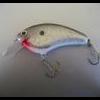Baits that spin and behave badly are worthless. Sure, you can find exception to any "rule". Put trebles on a 5 cent cigar and somewhere, sometime, a bass may bite it. That not really the point.
You want to maximize the number of fish that will bite your bait. It's a numbers and percentages game. Baits that run straight, that consistently reach the depth where the fish are holding, that swim with the desired wiggle action, and that resemble in size and color what the bass are feeding on - those baits will get bit more often. They are also the ones you can cast and retrieve reliably through the spots where you think the fish are - multiple times.
If it can't be tuned to run straight - get rid of it. Life is too short to be throwing crap baits. IMO, choose a bait that fits the depth, size, wiggle, and color criteria, in that order. Fish it with confidence, hit cover when you can (the bottom, brush and rock piles, submerged wood, etc), experiment with your retrieve speed and pauses, snaps, etc. You'll catch fish and have fun.





